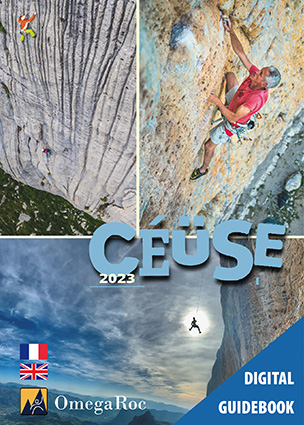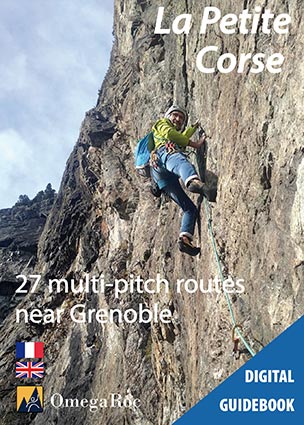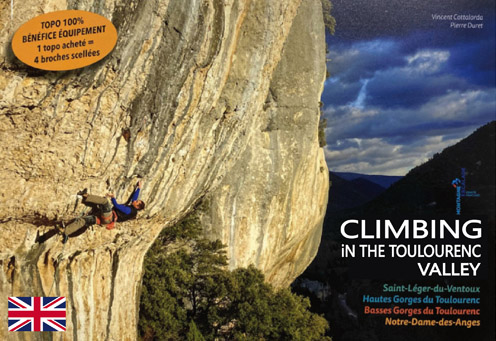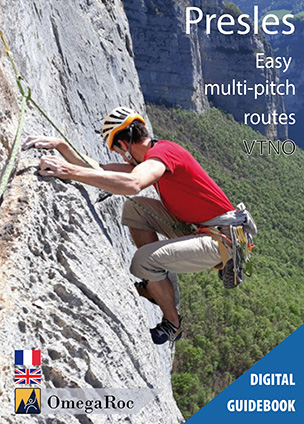
Digital guidebooks for climbing around Gap
There are two essential guides: The brand new Céüse 2023 guidebook and Escalade autour de Gap (Climbing around Gap).
The author of these guidebooks, Laurent Girousse, is one of the main bolters of the crags around Gap. He is also the author of the exhaustive guidebook about Céüse. Incidentally, he runs the Pizzeria Le Crux in Sigoyer which feeds the best climbers in the world!
The digital guidebook Céüse 2023
see the guidebook in the OmegaRoc app
This latest edition features all the routes on the cliff: 900 pitches spread across 37 sectors and sub-sectors. Each one is accompanied by a photo and route illustration.
Various approaches are described precisely and supported by panoramic photos.
For 25 years, this cliff has been a part of the global high-level climbing scene, mainly known for its challenging to extreme routes. However, nowadays, Céüse is no longer exclusive to the elite, as several recently re-bolted sectors allow everyone to enjoy this exceptional wall.
The digital climbingbook Climbing around Gap – Escalade autour de gap
see the guidebook in the OmegaRoc app
In addition to the Gap region, the guidebook Climbing around Gap covers the Dévoluy and the Champsaur massifs and, a little further north, the Valgaudemar massif and the Buëch valley. The guidebook presents more than twenty sport climbing sites, including the western part of Céüse*, the world famous sport crag , but also many multi-pitch routes generally fully bolted and at moderate level.
Local administrations (municipalities, departments and regions), that embrace the “mountain culture’’, fund the maintenance of several sites and promote the establishment of routes at moderate grade. Thanks to this commitment, many crags have been rebolted and several routes added in recent years.
* The guide presents only the western part of Céüse which is the easiest part of the cliff. It demonstrates that Céüse is not only reserved for the elite climbers.
The main climbing sites presented in the guidebook Escalade autour de Gap
Sport crags:
Céüse west face (sectors Lumineuse, Golots à gogo, larme de pluie, Dalles du CAPEPS, Cactus) – Blocs de Céüse – Ventavon – La Roche des Arnauds – Savournon – Sigottier – Agnielles – Saint-Julien-en-Beauchêne – Neuvillard – La Jarjatte – Ancelle – Pont du Fossé (Corbière, Les Dauphins) – Chaillol – Lesdiguières – Colombeugne – Surette – Les Etroits – Les Gicons
Multi-pitch routes:
Pic de Charance, Petite Céüse, Le Saix, Crête de la Gerle, Méolion ( Las poas, Les Sucettes de Méolion, L’aiguille des Bergers) – Sommet Rouge – Dalles de Gleize – La Valse des Prises (paroi des Colombiers)
Climbing in the Gap area and nearby massifs
For many climbers (who have probably never been to the area), climbing around Gap comes down to the famous crag of Céüse. For more than 20 years, from April to September, Céüse has been the most popular climbing destination in the world. It deserves it… but it also suffers when hundreds of climbers crowd at its feet.
They forget that many other high quality sport climbing sites allow everyone to climb all year round.
They forget that there are many other high quality sport climbing sites to climb all year round.
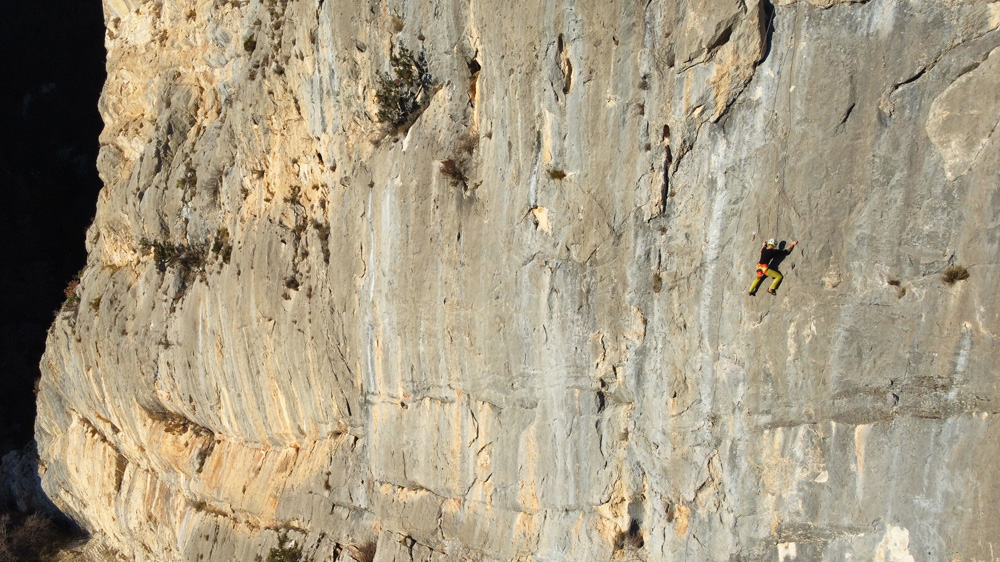
Already in the Alps but with a foot in Provence, Gap occupies a privileged place at the crossroads of several massifs. By choosing your crag according to the season and the weather, it is always the right season to climb in the region.
This geographical diversity makes it possible to climb in radically different settings. At the superb winter and mid-season crags such as Ventavon, Sigottier, or Agnielles , you can climb in the sun while the snow covers the surrounding peaks. For the highest crags you will have to wait until late spring when snow has disappeared from the approach paths. You then climb here under the watchful eye of the chamois in a pronounced mountain environment (Les Gicons, the slabs of Gleize, the cliffs of Méollion…).
This geographical diversity also induces an interesting geological diversity. Limestone is predominant with all types of inclination, colors and grips. Let us mention the exceptional walls of Céüse of course, but also the bulges of Ventavon, the slabs of Gleize or the endless strata of Le Saix.
You can also climb on granite or gneiss, on some crags of the Valgaudemar massif, at the gates of the Ecrins National Park. These grainy rocks favour technical climbing, where footwork is often decisive.
There is also granite on the cliffs dominating Méolion in the Champsaur (Les Sucettes and Las Poas) where several multi-pitch routes have been equipped.
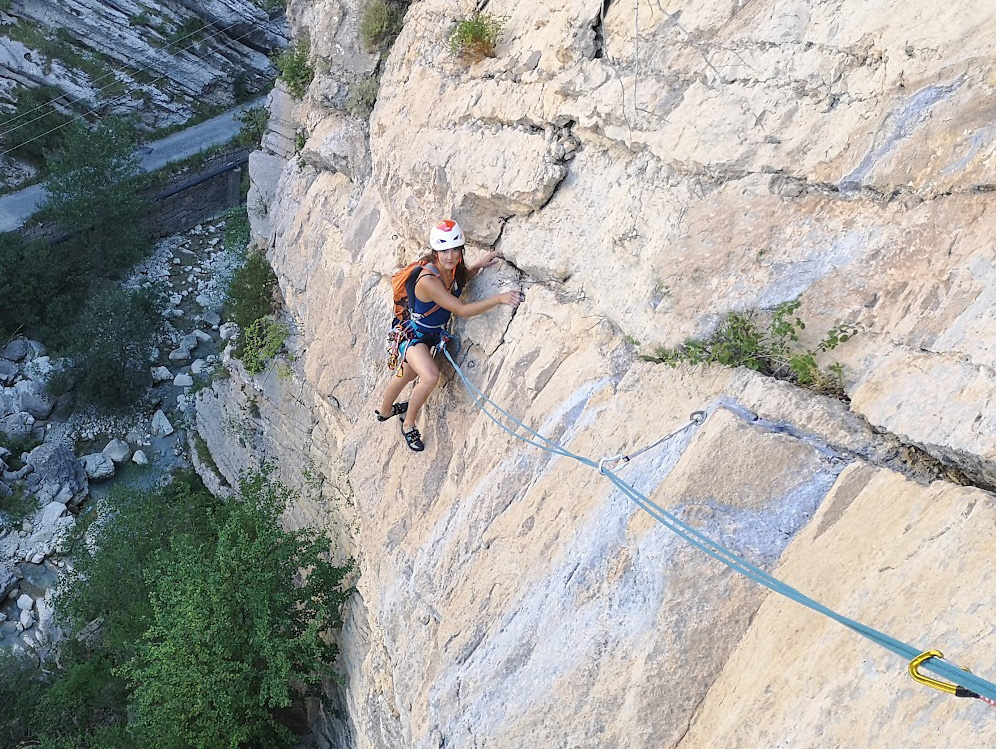

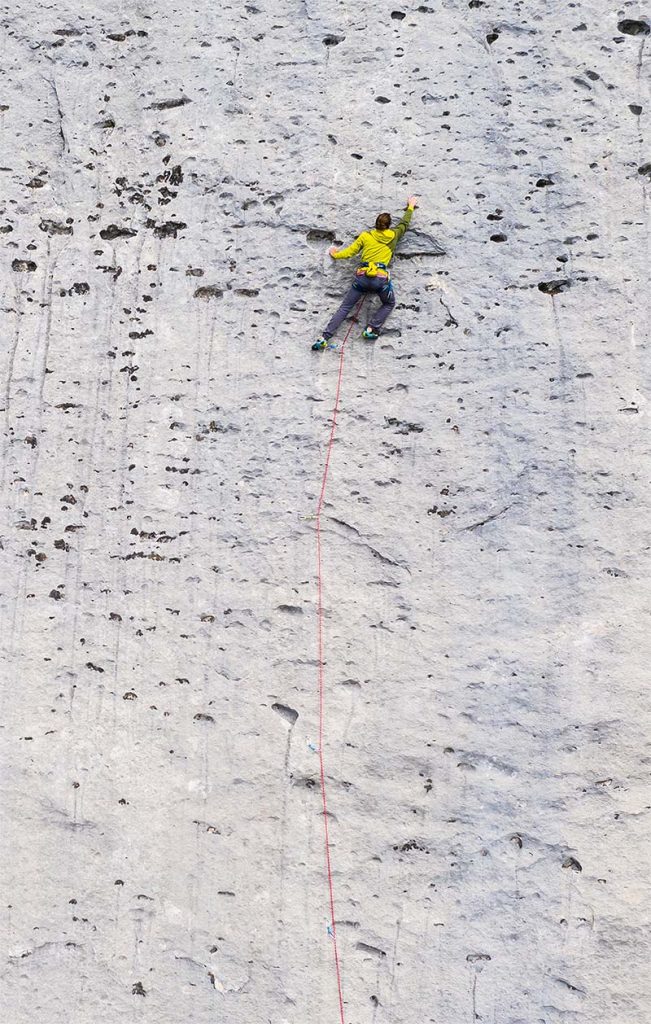
Climbing at Céüse
For many climbers, Céüse is the most beautiful cliff in the world, and it’s quite a statement! One thing is certain, Céüse is an exceptional cliff that withstands passing trends without ever going out of style.
With its extraordinary rock, ranging from flashy yellow to electric blue, Céüse is one of those very rare cliffs that you can recognize at first glance in magazine photos. This half-crown of limestone stretches for nearly 5 km, dominating the Gap basin and facing the summits. At the base of the cliff, it feels like being in an airplane with an extra-large window.
In terms of climbing, Céüse is a place of superlatives: everything is perfect.
Although it is the high-level routes that have solidified its reputation, you can find routes for all abilities, from heavily overhanging lines with various sculpted holds to technical slabs.
Regardless of the grade, the climbing is superb, and the routes are generally long, even very long. In the overhanging sectors, endurance is a determining factor. The occasionally spaced-out bolts demand an extra bit of courage as lactic acid tickles the forearms.
In the more accessible routes and the re-bolted old sectors (especially in the West Face), the bolting is more standard.
Thanks to its perfect half-moon shape, the sectors stretch from East to West, allowing climbers to find sun or shade depending on the season.
The approach hike (about 1 hour or a bit more) with its 450 meters of elevation gain is a beautiful walk. Nevertheless, it discourages some, which is just as well because on certain summer days or beautiful spring weekends, certain routes can get crowded. In those times, embrace the adventurous spirit and explore the less frequented peripheral sectors.
During winter, the cliff takes a pause, covered in snow. It becomes a privilege for locals who get to enjoy the most beautiful days in peaceful solitude.
A bit of history by Laurent Girousse
More than a cliff, Ceüse is a group of several cliffs. These cliffs are different in many ways: their orientation, their kind of climbing and the type of rock. Their histories are all different: the people, the generations, the equipment style as well and obviously the grades.
Ceüse is a timeless classic and has been the witness of modern climbing history.
Climbing in Ceüse started in the late 70’s, the cliff is then a training field in summer as well as in winter. Far from the rock that makes the cliff famous today, we exploited at that time the lines of weakness… sometimes wearing crampons!
Modern climbing arrived in the 80’s and 90’s. cordless drills replaced hammers that were used before to put pitons and bolts with the hand drill. Slowly this unique cliff reveals itself. Sectors: « Golots à Gogo », CAPEPS or Natilik are first exploited keeping focus on multi-pitch routes. But then, single pitch routes started to attract with their flawless lines and their complexity.
During this period the sectors “Cascade”, “Berlin”, “Demi Lune” and “un Pont sur l’Infini” were developed.
The 90’s and 2000’s were quiet regarding new openings but very active regarding the maintenance. Many re-boltings were done, the trend was more to secure and maintain what already existed than to set up new routes.
In 2000’s 2010’s thanks to new motivations and new faces, equipment and opening of new routes started again. Face de Rat sector with affordable routes or even Grande Face and Nitshapa revealed their potentials. Openings were made searching for logical lines in a rock that will keep surprising us. Equipment became more in accordance with modern climbing.
From 2010 until 2018 the potentials of Grande Face and Nitshapa were exploited along with the opening of the new sectors: Plein Sud and Papillon.
Even if the maneuvering space for new routes starts to be reduced, it makes no doubt that Céüse still have some secrets to reveal in the coming years.
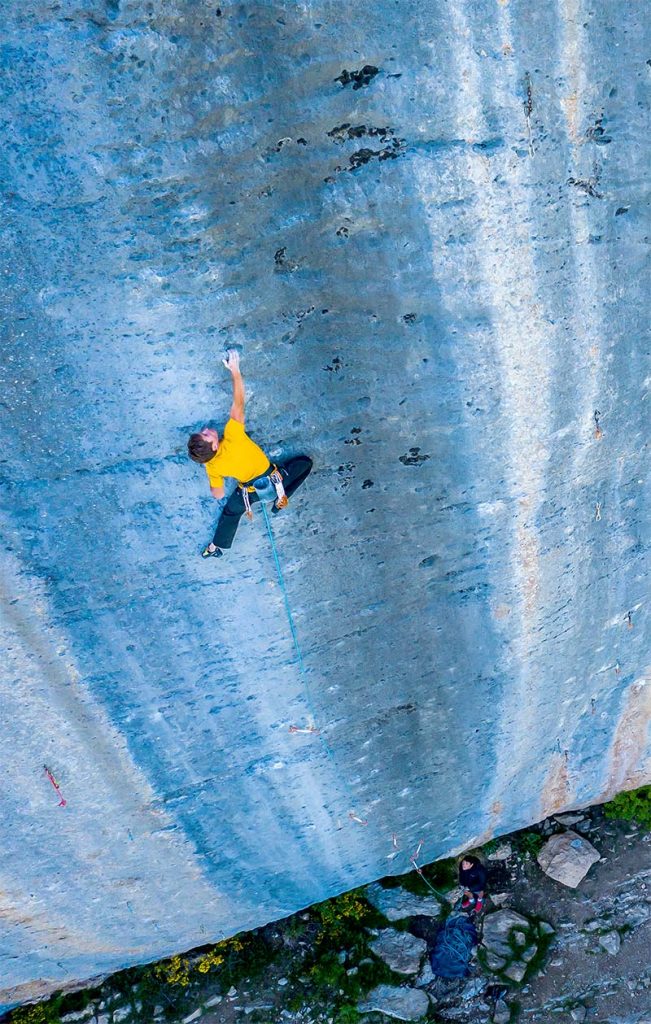
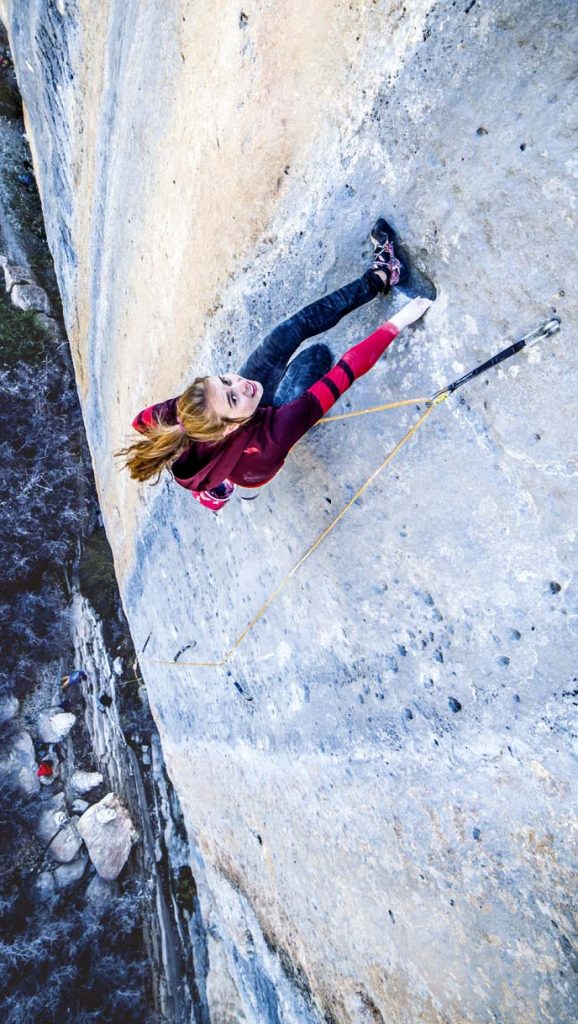
The Biographie wall by Arnaud Petit
Biographie wall is one of the most beautiful wall in the world, it is the wall of the future. Waves of bulges with no ends, amazing colors and a high-quality limestone make it unique.
When Jean-Christophe Lafaille opened Biographie, it was seen as a futuristic route, the best French climbers managed to achieve nearly all the moves but we had to wait for Chris Sharma to reach the top in 2001 after 4 seasons working in it. In 2017 Margo Hayes is the first woman to complete Biographie. Today only 15 persons have reached the top and except Alex Megos who did it easily in one day all the others put a lot into it, more than they would have thought, this complexity built its reputation.
Since then, many lines appeared, some of them stayed only projects as Chris Sharma and Ethan Pringle’s routes on each side of Biography but also the ones equipped by Sylvain Millet, Quentin Chastagnier or Jean-Yves Leguy. These upcoming 9b and 9c of the Biographie wall will occupy the strongest for a long time.
This sector is situated in the centre of the cliff and promises great shows! The most accessible routes start at 7c+ with Les Colonnettes and 8b if you want to climb the wall to the top via the beautiful route Black Bean opened by Bruno Clément. One day, I had lots of fun trad climbing it.
Among the most amazing routes in Ceüse I could also talk about an 8b on the right side of this wall: Stairway to Heaven. This is one of the most beautiful routes I have climbed. This route has been climbed only twice, probably due to the fact that there are only two bolts on the 20m crux. On this side of the wall you will also find very nice routes on grade 7, a bit less extreme.
It happened on the cliffs around Gap …
La Barule des Barulots
Fun climbing on the Gleize slabs
Trad climbing at Céüse
An other way to climb on the most famous crag in the world
First ascent of Bibliographie 9b+
The hardest route at Céüse
Explore the crags in the neighborhood
Here are somme digital guidebooks for climbing in the surroundings areas.
To see all the guidebooks available on the OmegaRoc app: The OmegaRoc guidebooks

